What we have discovered about scarlet malachite beetles
and the consequences for the conservation of the species
We’ve had the pleasure of working on the scarlet malachite beetle conservation project for many years. Their species is in decline in the UK. We’re attempting to reduce that decline. Here are some of our findings.
Thatch
- Whilst adult beetles are seen on grasses and flowers in (a very few) meadows, their larvae (‘grubs’) live in warm dry thatch.
- This means that they need both habitats close together. It also means that they are in danger whenever a thatched roof in a suitable location, is re-thatched. Or when it burns or when it is treated with insecticides or fire proofing chemicals. Thatch was once the commonest roofing material used to protects, houses, churches, barns and wall. Today it is possibly the rarest roofing material and yet also the most sustainable with good insulation and good for wildlife.
Courtship
- Scarlet malachite beetles were thought to be generalist feeders on or in a variety of meadow flowers. Especially cow parsley and buttercup. By watching them in the wild, we found that they much prefer grass and cereal heads, in flower. This is where they perform their courtship ritual. The female takes possession of a grass head and stands face down. She feeds on the pollen until a male arrives on the grass stem beneath her. They bob their heads at each other (‘meaningful nods’) as the male approaches. His antennae have special hooks at the base. Once he is close enough, the hooks catch hold of the female’s antennae and draw her face close to his. This causes her to taste juices from a gland on his forehead. This is known as the kiss. If she’s happy with the kiss, she allows him to mate.
- All this means that scarlet malachite beetles need the right plants throughout the breeding period. Which may extend from Late April to late July.
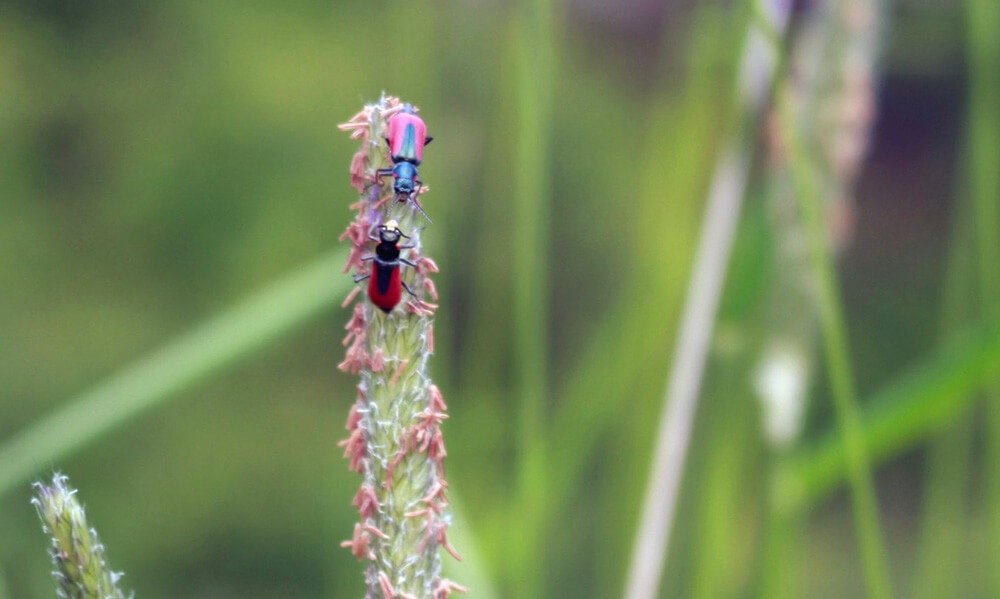
Trees
- The beetles tend to congregate in groups, we call them ‘courts’. If the court is shaded by a tree or structure, the entire court will move to a sunnier spot. Usually they court and mate in full uninterrupted sunny spots.
- This means that untended traditional hedges or new buildings may make long-standing traditional breeding sites unsuitable or sub-optimal, leading to decline or extinction. Similarly, tree-planting in the wrong place could ruin scarlet malachite beetle habitat. Many thatched building have ornate (very beautiful) gardens with shrubberies and ornamental trees (that can quickly grow to shade suitable areas of roof) in places that were meadows when the building (where a hut, cottage or enormous tithe barn) was built. This and mowing and tree planting of village greens and commons can quickly combine to wipe out local populations, fragmenting meta-populations and contributing to extinction.
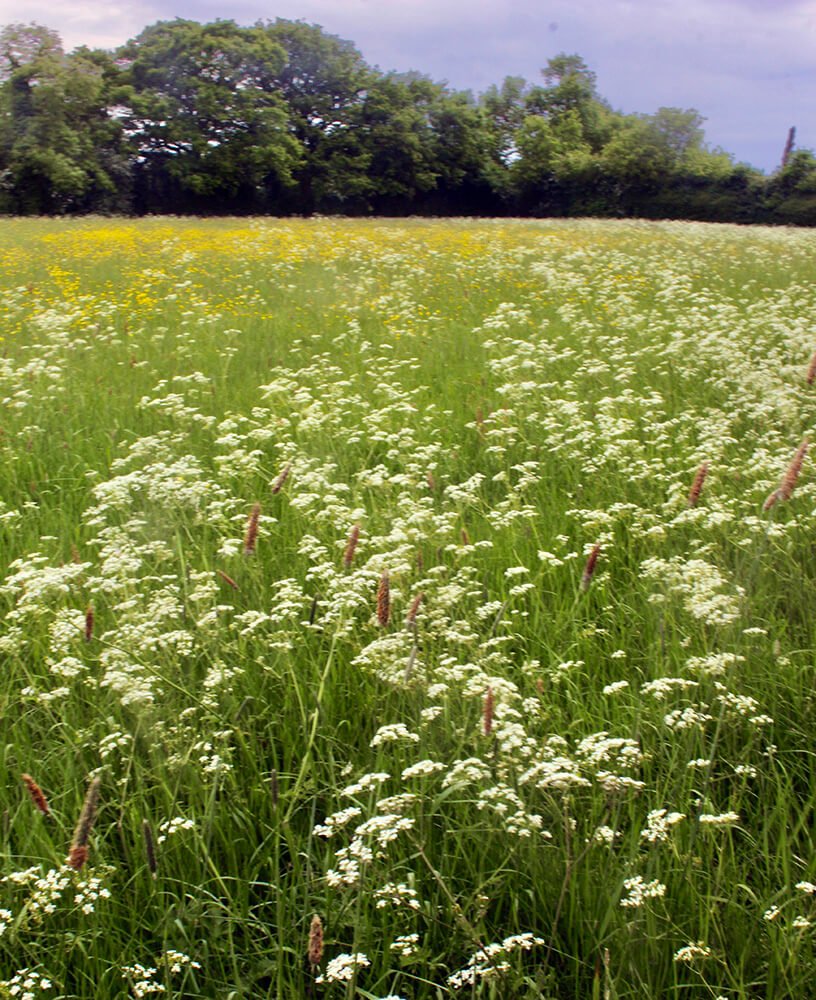
Light
- Through a variety of experiments, we discovered that the beetles are attracted to light.
- This means the beetles can easily find their way out of thatched roofs and similar to sunny spots on meadows where other beetles will also congregate. Pheromones and grass pollens will also help draw beetles together.
To the death
- We have found that males will fight to the death and the victor will eat the loser. We have also known a male to be torn to pieces in the company of several females.
- This means that, if populations are small (and perhaps malnourished) they are in danger of accelerating their own decline when they reach a tipping point.
Prehistoric habitat
- Once mated, or if food is short, females will catch and eat other insects and their behaviour changes from seeking tall flowers, to seeking nooks and crannies where they can lay their eggs. We think this hints at their prehistoric habitat which was rich in a variety of nutritious pollens and insect prey. Wildflowers and insects are known to have suffered cataclysmic declines leading to declines in species which depend on them.
Mowing meadows
- By building our beetle cottages, we discovered that this species has a one year life cycle.
- This means that mowing a meadow at the wrong time of year, or re-thatching a roof or losing it to fire, could wipe out an entire local population in just one season because they are all in one place. We believe this has happened many times.
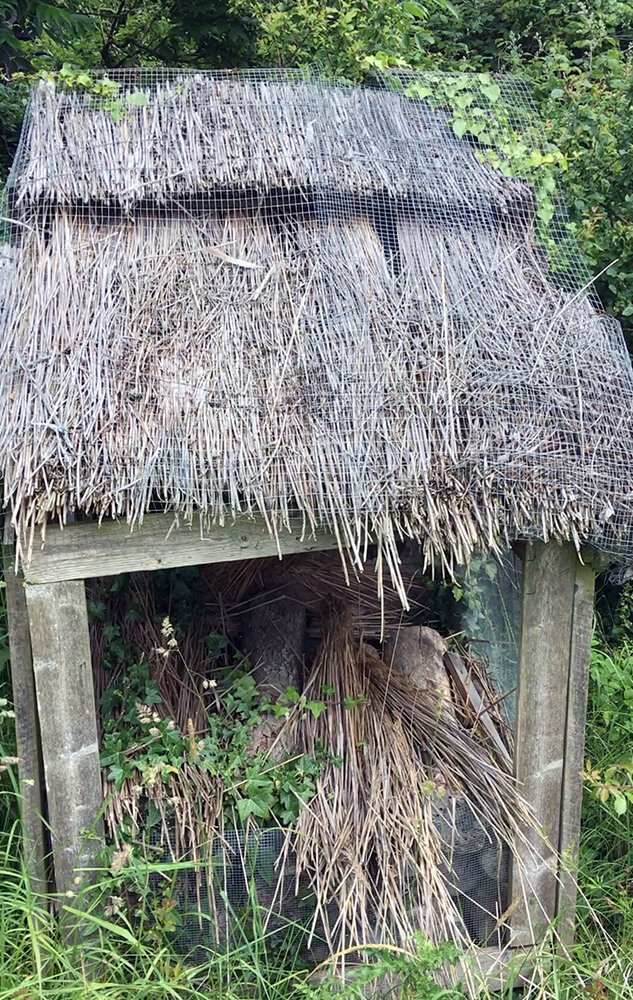
Life cycle
- By observing beetles in captivity we discovered their complete life cycle.
- This helps us plan for their future, to spot suitable habitat and to engineer artificial habitat for new populations in safe places such as wildlife reserves.
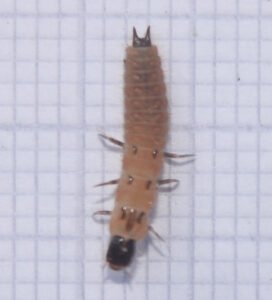
Larvae
- The last piece in the puzzle fort us was larval food. What do the grubs eat and are they dependent on bees or stored pollen in thatch to provide essential nutrients. By captive breeding, we call it conservation breeding, we discovered that the larvae will eat springtails earwigs and shedded skins of spiders and could grow to adulthood without a special diet.
- This means that all they’ve needed was a dry, warm environment for themselves, and enough damp habitat nearby to provide food. We think that the mesh on thatched roofs and the tightly packed nature of the thatching material is very useful for protecting the beetles from cold, damp and predators. South facing roofs, especially, provide warm dry habitat, rich in invertebrates but hostile to birds where scarlet malachites can live in safety. All they need then is a rarely cut hay meadow nearby to fly to and breed.
Hopeless to hopeful
- When we first started working with scarlet malachite beetles, their decline was known but its reasons were not understood. It’s food and life-cycle were not understood. The situation seemed hopeless and the species looked, as it does today, perilously close to extinction.
- We believe it’s outlook has changed, from hopeless, to… hopeful. We can save this rare, beautiful and fascinating native species, a relic of the old English countryside.

Supporting Beetle Conservation
The scarlet malachite beetle conservation project currently has no funding. We can not abandon species which need our help. We are not a charity we created Lifeforms Art to be able to continue working on conservation projects without spending all our time seeking out funding. Purchases from Lifeforms Art actually make this conservation possible. To help support this beautiful beetle we have drawn this beautiful creature…
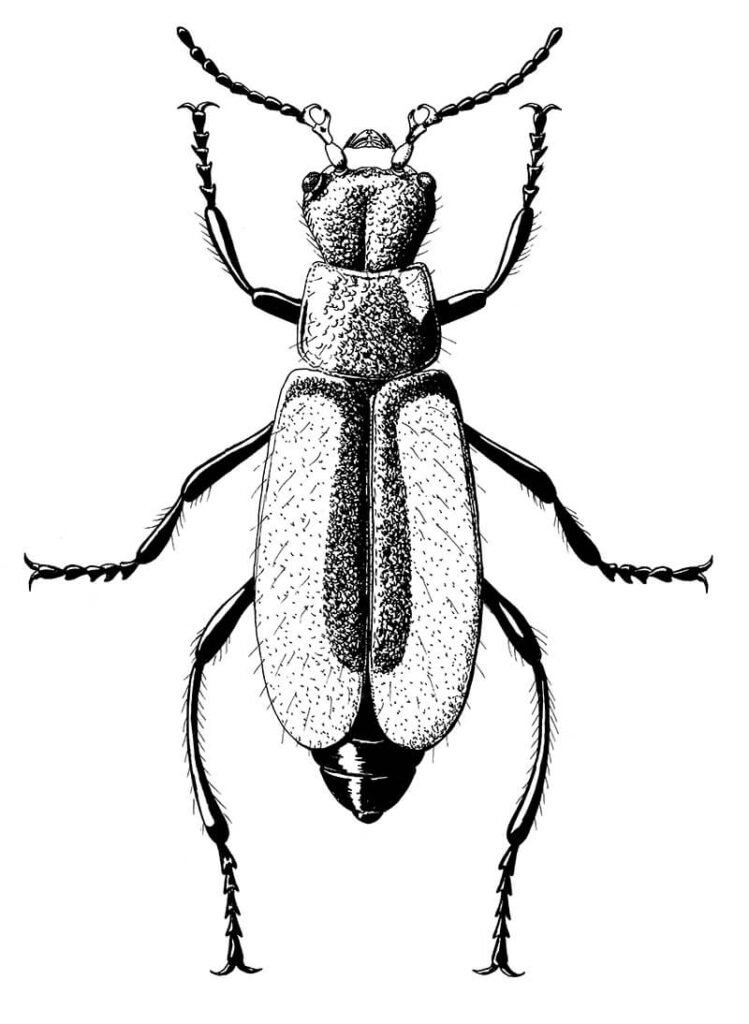
He is now available to order on a T-shirt – this is the male with his special claspers on the antennae.

And this is me modelling it!! You can buy your T-shirt here. Thanks for your ongoing support.


